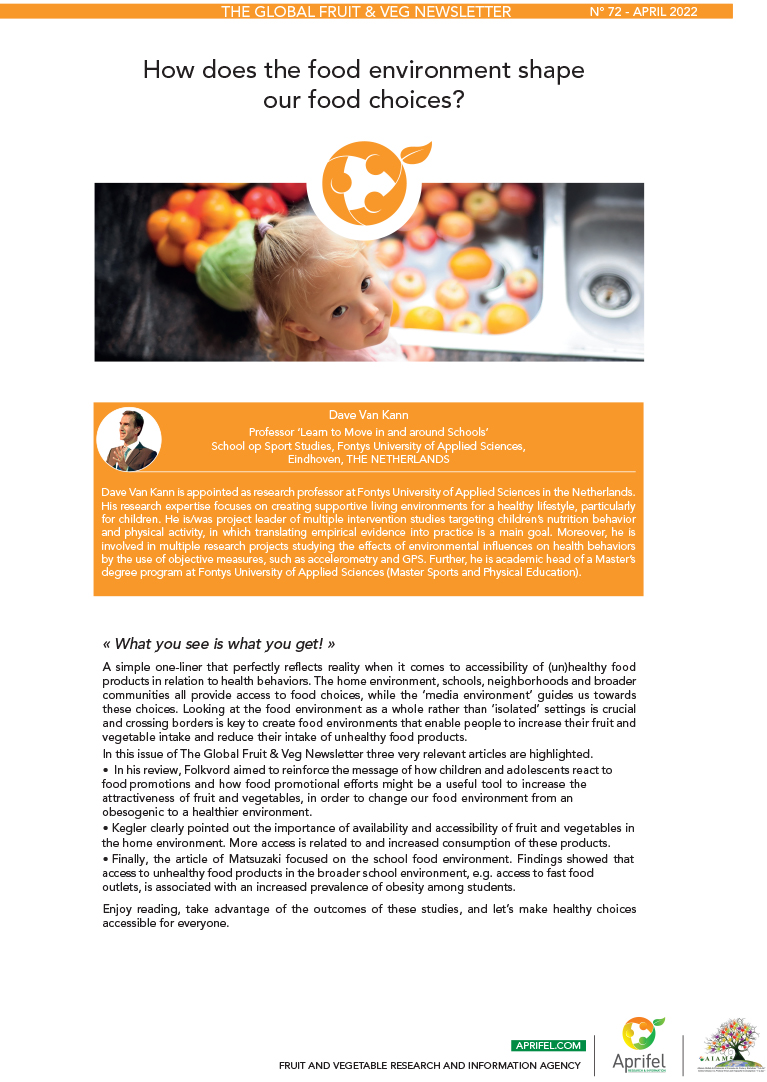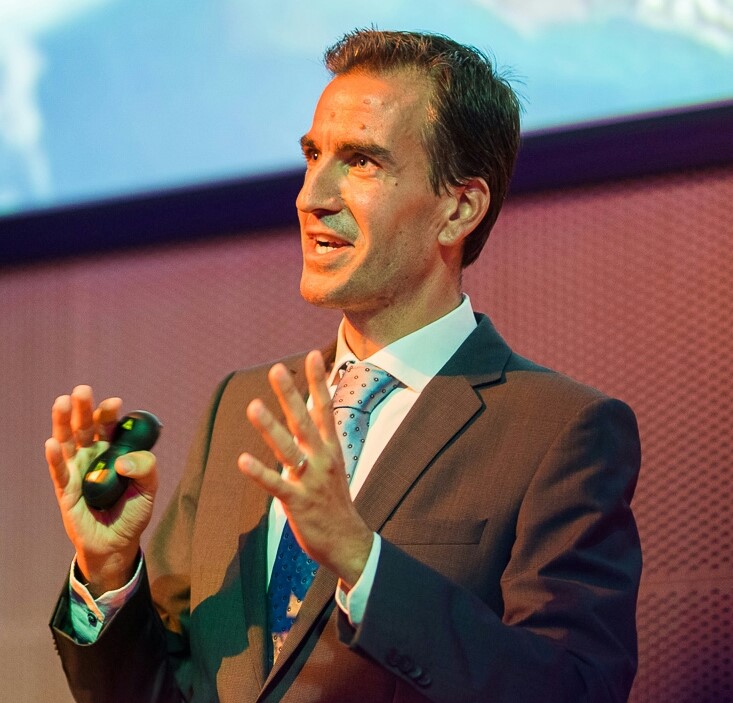How does the food environment shape our food choices?
Editorial

« What you see is what you get! »
A simple one-liner that perfectly reflects reality when it comes to accessibility of (un)healthy food
products in relation to health behaviors.
The home environment, schools, neighborhoods and broader communities all provide access to food choices, while the ‘media environment’ guides us towards these choices.
Looking at the food environment as a whole rather than ‘isolated’ settings is crucial and crossing borders is key to create food environments that enable people to increase their fruit and vegetable intake and reduce their intake of unhealthy food products.
In this issue of The Global Fruit & Veg Newsletter three very relevant articles are highlighted.
- In his review, Folkvord aimed to reinforce the message of how children and adolescents react to
food promotions and how food promotional efforts might be a useful tool to increase the
attractiveness of fruit and vegetables, in order to change our food environment from an
obesogenic to a healthier environment. - Kegler clearly pointed out the importance of availability and accessibility of fruit and vegetables in
the home environment. More access is related to and increased consumption of these products. - Finally, the article of Matsuzaki focused on the school food environment. Findings showed that
access to unhealthy food products in the broader school environment, e.g. access to fast food
outlets, is associated with an increased prevalence of obesity among students.
Enjoy reading, take advantage of the outcomes of these studies, and let’s make healthy choices
accessible for everyone.
Dave Van Kann is appointed as research professor at Fontys University of Applied Sciences in the Netherlands. His research expertise focuses on creating supportive living environments for a healthy lifestyle, particularly for children. He is/was project leader of multiple intervention studies targeting children’s nutrition behavior and physical activity, in which translating empirical evidence into practice is a main goal. Moreover, he is involved in multiple research projects studying the effects of environmental influences on health behaviors by the use of objective measures, such as accelerometry and GPS. Further, he is academic head of a Master’s degree program at Fontys University of Applied Sciences (Master Sports and Physical Education).

